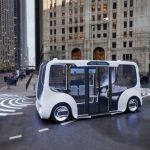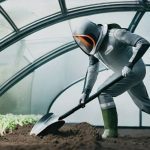 History
History  History
History  Health
Health 10 Futuristic Ideas to Treat Common Medical Problems
 Weird Stuff
Weird Stuff Ten Surreal Attempts to Reverse Baldness
 Facts
Facts 10 U.S. Government Contingency Plans for the Unthinkable
 History
History 10 Weird Distractions from the Great Depression
 Movies and TV
Movies and TV 10 Fictional Kings Who Go from Good to Bad
 Food
Food The Fantastic Chemistry Behind Why 10 Popular Foods Taste So Good
 Technology
Technology 10 Futuristic Fungal Technologies
 History
History 10 Not-so-Spooky Events That Also Happened on October 31
 Creepy
Creepy 10 Unsettling Ghost Stories to Tell This Halloween
 History
History 10 Legends Whose Last Moments Undid Their Glory
 Health
Health 10 Futuristic Ideas to Treat Common Medical Problems
 Weird Stuff
Weird Stuff Ten Surreal Attempts to Reverse Baldness
Who's Behind Listverse?

Jamie Frater
Head Editor
Jamie founded Listverse due to an insatiable desire to share fascinating, obscure, and bizarre facts. He has been a guest speaker on numerous national radio and television stations and is a five time published author.
More About Us Facts
Facts 10 U.S. Government Contingency Plans for the Unthinkable
 History
History 10 Weird Distractions from the Great Depression
 Movies and TV
Movies and TV 10 Fictional Kings Who Go from Good to Bad
 Food
Food The Fantastic Chemistry Behind Why 10 Popular Foods Taste So Good
 Technology
Technology 10 Futuristic Fungal Technologies
 History
History 10 Not-so-Spooky Events That Also Happened on October 31
 Creepy
Creepy 10 Unsettling Ghost Stories to Tell This Halloween
10 Futuristic Ideas to Treat Common Medical Problems
The future is full of wacky science, including some crazy medical ideas to transform healthcare.
Even when a specific idea fails, strange advances often branch into unexpected discoveries—like insulin, penicillin, and Viagra (yes, Viagra saves lives).
So, can we even predict how these remarkable futuristic advances will help humanity live longer or better?
Related: 10 Most Persistent Health Myths and Why They’re False
10 Titanium Hearts with Magnetic Rotors
An Australian man recently made healthcare history by surviving for 100 days with a titanium heart before receiving a donor organ.
It’s a world first and a promising advance for the roughly 6.7 million Americans facing heart failure. The titanium heart isn’t a permanent cyberpunk-style solution but a stopgap measure until a patient can receive a heart transplant.
It’s called BiVACOR, and it may eventually become a permanent solution for people who cannot receive a donor heart due to age or other health issues.
This titanium cardiac pump works using a magnetically suspended rotor that pulses blood throughout the circulatory system. It includes a cord that plugs into a power supply, such as next to one’s Rivian or sonic toothbrush. And since it only has a single moving part, it’s much more reliable and less likely to break down than, say, a blender.[1]
9 Brain Chips to Reveal Brain Development in Real Time
Despite their nefarious connotations, brain chips could reveal some of the brain’s greatest mysteries. So, Harvard scientists are testing a “soft, thin, stretchable bioelectronic device” that’s implanted into a tadpole’s neural plate.
The neural plate is a flat structure that folds, like meat origami, into two 3D structures: the brain and the spinal cord. Vitally, the researchers demonstrated that they could do this without impacting the tadpole’s development or behavior. This little electrode array can then monitor electrical activity from individual brain cells with “millisecond precision.”
This concept, scaled to other creatures, could someday offer unprecedented glimpses into brain development. For example, tracking the electrical activities associated with conditions like schizophrenia or bipolar disorder during early development could yield revolutionary insights and treatments.[2]
8 King Tut’s Curse Is Turned Into King Tut’s Treasure
The notorious “pharaoh’s curse” has become a cancer-fighting tool, thanks to University of Pennsylvania engineers.
One century after cigar-smoking archaeologists unsealed the tomb of Tutankhamen, it’s still revealing hidden treasures. A Penn-led team isolated a “new class of molecules” from the deadly fungus associated with the unsealing of ancient Egyptian tombs.
Aspergillus flavus is a crop fungus linked to the deaths of excavation team members who explored King Tutankhamen’s tomb in the 1920s. Now, researchers have isolated and modified peptides from the “pharaoh’s curse” fungus to kill leukemia cells and plan to test their potency in animals and humans. Most importantly, it offers medical science a new avenue for isolating beneficial compounds from otherwise lethal pathogens.[3]
7 AI for Heart Health
Echocardiography uses sound waves to visualize the heart and its function, measuring blood flow and other important indicators of wellness or disease.
The tough part is the analysis, which requires a “tremendous amount of clinical time from highly skilled readers” to make sense of the data and tease out any potential hiccups in heart function.
To expedite this process, researchers are developing an AI model that can analyze echocardiograms in minutes.
Called PanEcho, it was trained on nearly 1 million echocardiographic videos and validated on external datasets and with more than 5,000 patients. Though it still needs a human to work alongside it, the AI analyzes many views of the heart simultaneously and can accurately assess a diverse range of conditions.[4]
6 Using Pig and Human Cells to Grow Teeth
A full set of teeth isn’t just aesthetically pleasing—it can help us conquer our favorite snacks. But once we’ve lost an adult tooth, there’s no way for it to grow back… yet.
Therefore, scientists from Tufts University School of Dental Medicine used human and pig cells to trigger the early growth of human-like teeth in pig jawbones from slaughterhouses.
It’s a neat advance that may eventually allow humans to replace lost chompers with real, living, bioengineered tissues. The benefits are many because current dental implants have a titanium (usually) base that’s anchored into the jawbone.
However, bioengineered replacement teeth offer better cushioning during chewing and support healthy bone turnover in the jaw, while also providing sensory feedback because they have nerves.
The trick is getting the right cells to develop into the many tissues of the tooth, including the white enamel layer on top and the dentin, the tooth’s hard bulk.[5]
5 Fat-Busting “Boba” Beads
The world is gaining weight—to put it politely—and it’s leading to poor health outcomes and skyrocketing healthcare costs.
Sadly, expedited fat loss options may involve gastric bypass surgery, drugs that cause diarrhea, or daily appetite-suppressing injections.
Now, a Sichuan University innovation offers another way: fat-busting microbeads that show promise in mice. The beads are made from green tea compounds and vitamin E, then wrapped in a seaweed substance.
Once ingested, they expand in the intestine, trap fat particles, and are then excreted. In tests, rats treated with these beads lost up to 17% of their body weight. For humans, such beads could someday be added to desserts or bubble teas, like tapioca pearls, since there’s already a boba place on every corner.[6]
4 Wearable “Robots” for Rehabilitation
Neurodegenerative diseases are a nightmare. They rob people of their daily freedom and can develop despite the most meticulous health efforts.
Those with neurodegenerative diseases, or individuals who’ve suffered a stroke, may no longer be able to brush their teeth, comb their hair, dress themselves, or even eat. To help them, Harvard scientists are developing a soft, wearable robotic device that goes over the shoulders, chest, and upper arms.
The device assists with upper-body movements and uses machine learning to provide tailored support based on each individual’s needs. As a result, such wearable technologies can be used both for rehabilitation and to help people regain their daily freedom.[7]
3 Lab-Made Mucus Heals Wounded Guts
Hydrogels are gelatin-like materials that absorb a lot of water and are being turned into fake mucus.
This artificial mucus isn’t made for novelty shops but for healthcare. Hydrogels are great for slowly releasing medications into the bloodstream, but they’re broken down by stomach acid if ingested orally. Yet a new type of artificial substance, based on stomach mucus, is designed to resist acidic breakdown.
This “ultrastable mucus-inspired hydrogel” (UMIH) is a gentle, jelly-like material that can coat the inside of the gut to heal ulcers and other gastrointestinal wounds in people and animals.[8]
2 A Pacifier That’s Also a Baby Monitor
Our homes are already full of sensors. The future will be filled with even more hidden sensors, but some will hopefully improve our health—like the baby-boosting bioelectronic pacifier.
Childcare is an essential use for biosensing because young children can’t tell us exactly how they feel. Additionally, current tech for monitoring infant health is bulky or requires blood draws, which are painful.
But the bioelectronic pacifier, developed by Georgia Tech, can continuously monitor electrolyte levels to check infant health in real time. A pacifier is the perfect option, as it can be easily fitted with tech and made into a standalone, wireless, noninvasive health tracker—especially for infants in intensive care units.[9]
1 Brain Zappers to Treat Alzheimer’s
Alzheimer’s is the most common form of dementia. Yet it’s often difficult to detect the onset of this disease and, sadly, there’s no cure—only management.
But there’s some treatment hope that’s gaining traction for mental disorders, including depression: zapping the brain with electricity.
Technically, it’s more of a stimulatory effect than a zap, called transcranial direct current stimulation (tDCS). It’s not painful or overly invasive, as it’s administered by placing an array of electrodes on a patient’s head to deliver low-intensity electrical current.
After two 30-minute sessions a day, patients did show cognitive improvements. Scientists say this may be because the electricity helps the brain enhance plasticity, allowing it to form new neural connections and pathways.[10]
+ Bonus: Insanely Cold Temperatures Improve Sleep Quality
Want to sleep better? Just subject yourself to temperatures of -130°F (-90°C) for a few minutes a day—no biggie. For those without access to Antarctica, a cryochamber is a good option.
Researchers from Université de Montréal and France’s Université de Poitiers subjected 20 women and men, average age of 23, to extreme cryostimulation for five consecutive days. The participants spent five minutes each day at -130°F, wearing basically just a swimsuit, croc-like shoes, mittens, and a knit hat (“tuque” in Canadian French).
The participants then chilled (pun intended) the rest of the day. After the five days, their sleep improved: their slow-wave sleep (the most restorative kind) increased by an average of more than seven minutes, and some participants—mostly women—also benefited from reduced anxiety.[11]








